If you ask a five year old child to draw a picture of a person, they would likely draw a stick figure. Usually, that means a circle representing the head and a line representing the body. Four more lines radiating from the body represent the arms and legs.
It is the simplest abstraction of a human that is universally recognized.
The most basic stick figures are made of lines. Lines are one-dimensional.
Before I go further, I’d like to explain what “one dimensional,” “two dimensional,” “three dimensional,” and so on really means (from here, let’s refer to these as “1D,” “2D,” “3D,” and so on).
Something that is zero dimensional (or 0D) is a single point. It’s just an infinitely small dot. It exists by itself. When you draw one on paper, it has no lines coming out of it.
A 1D figure is a “stack” of 0D figures. It is conceptualized on paper as a line. Each point has exactly one line coming out of it.
A 2D figure is a stack of 1D figures. That is, it’s a stack of lines. When you draw one, it looks like a shape with two lines connecting each point.
A 3D figure is a stack of 2D figures. Think of it like a stack of papers. Conceptualized, it looks like a cube with three lines connecting each point.
A 4D figure is a stack of 3D figures. You can think of it as motion in 3D space. A stack of papers is on the desk at one moment in time, but it moved to the floor at another moment in time. If you connect all the points, each point has four lines connecting to it. In the real world we know, the fourth dimension is generally thought of as “time.”
A 5D figure is a stack of 4D figures. Each point has five lines connecting to it. You can think of it as the real world and all of its alternate realities.
It is increasingly difficult to conceptualize dimensions as they increase. I can’t even imagine how a six dimensional object would work.
Wikipedia’s entry on hypercubes provides a good overview of these concepts. Here is a good visualization of the first sixteen dimensions (from Wikipedia):
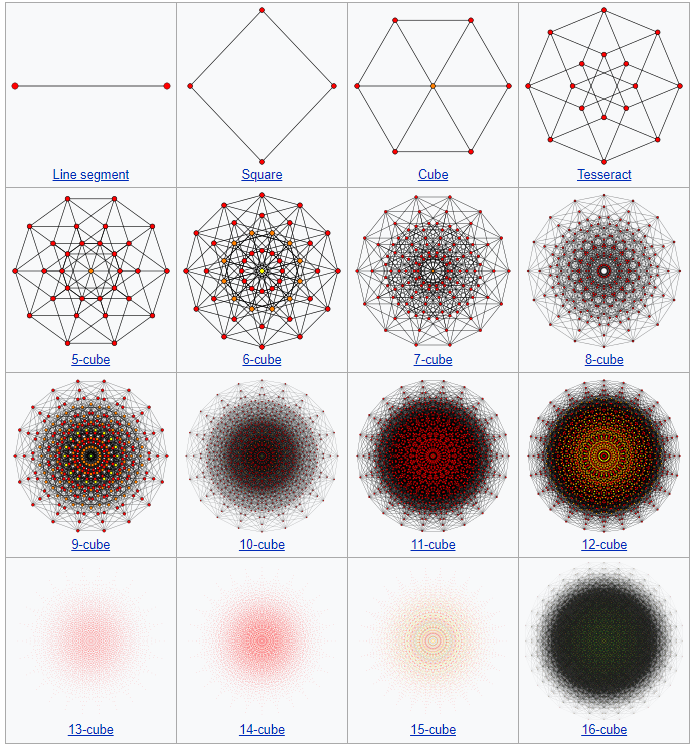
With these concepts of dimensionality in mind, I asked DALL-E to conceptualize stick figures in the first three dimensions:
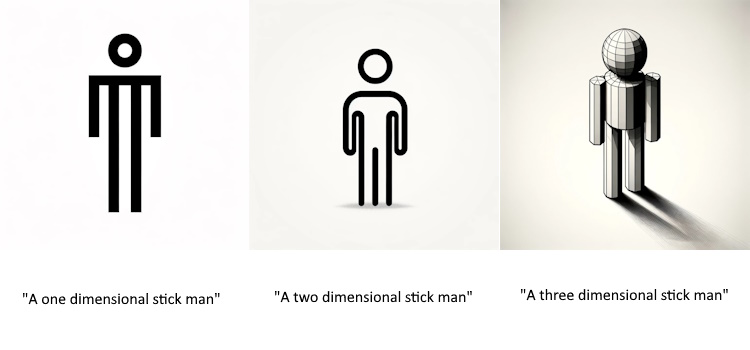
These were very simple stick figures and easy to conceptualize. However, things got interesting once I moved past the third dimension:
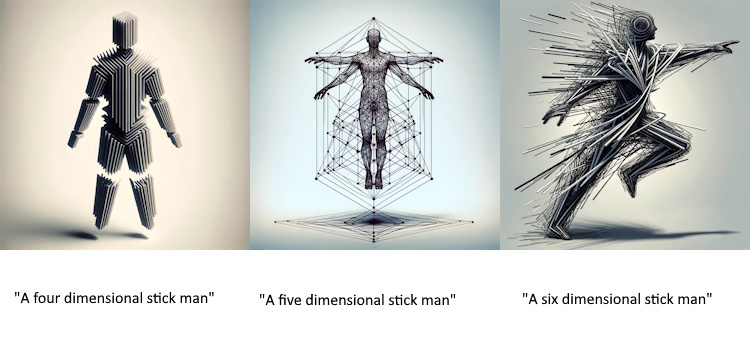
I decided to keep going. The stick figures became progressively more human-like:
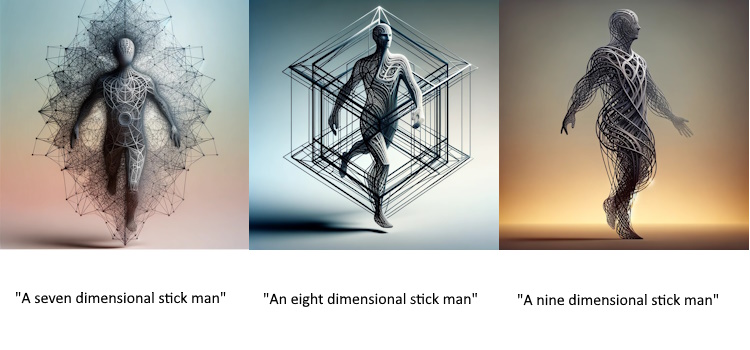
At the tenth dimension, the stick figures began taking on a transcendent quality:
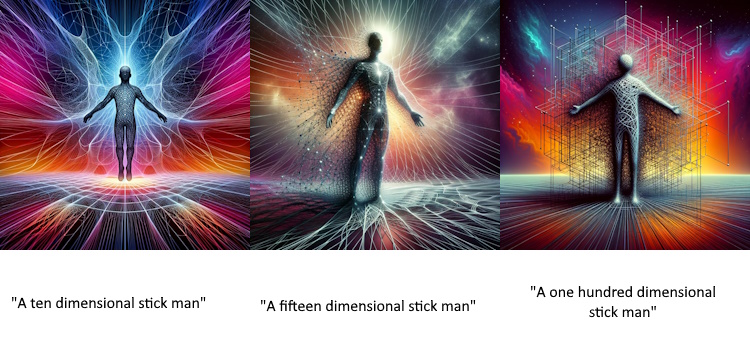
At a thousand dimensions, my stick figures became angelic, with some sprouting wings of complexity:
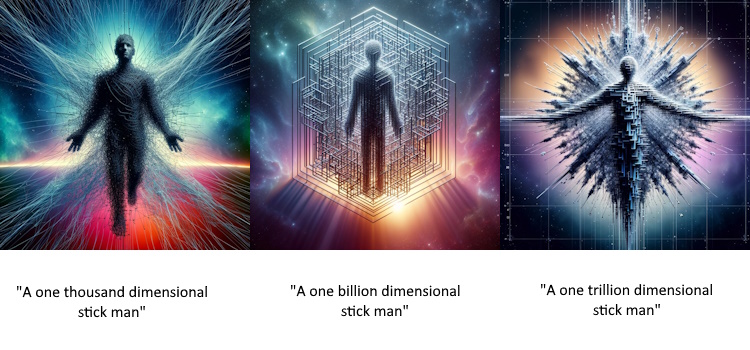
I kept going, until I wondered if the AI could comprehend a stick figure of infinite dimensions. What I got looked like how I might imagine God.
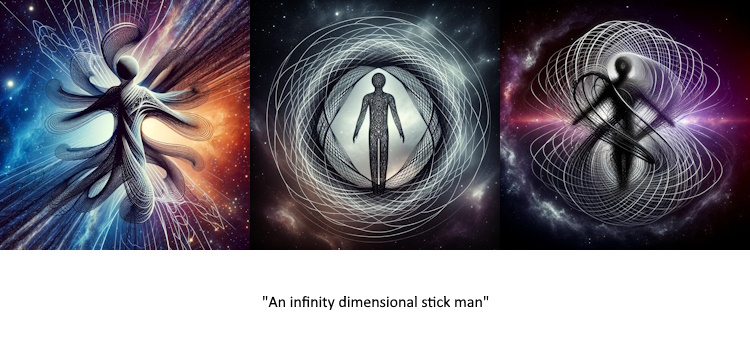
The infinity dimensional stick figure is some nebulous entity with infinite tendrils reaching out to all corners of the universe.
Is this a face of God?
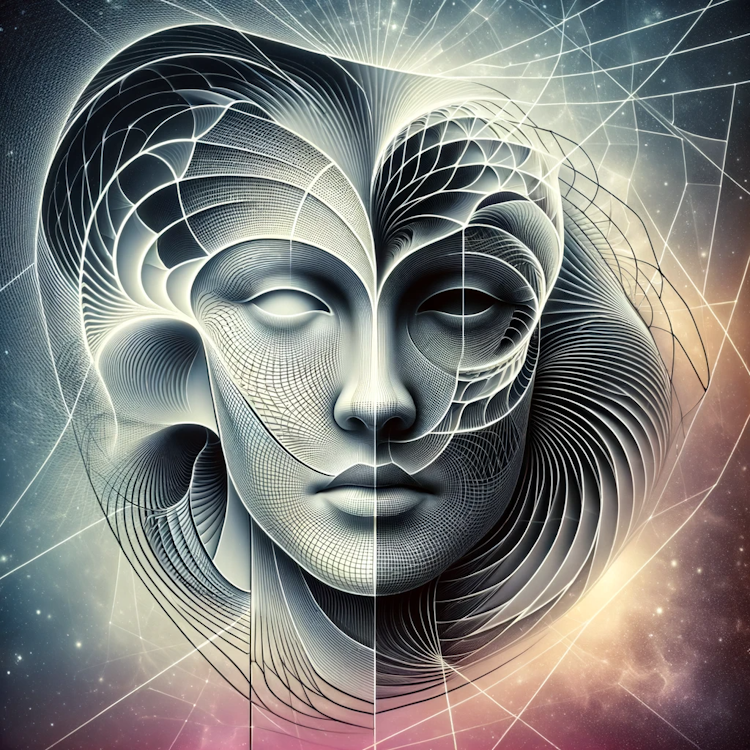
Leave a Reply